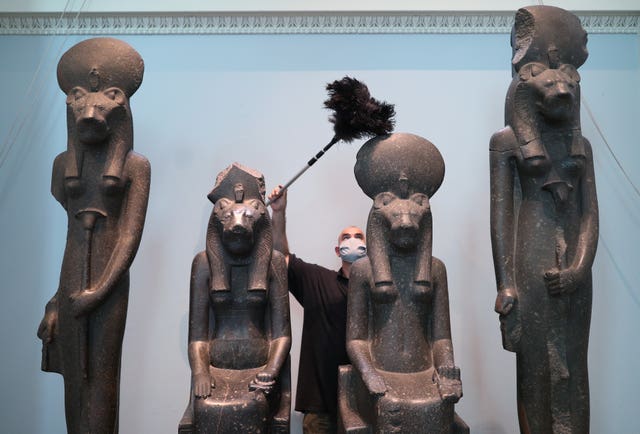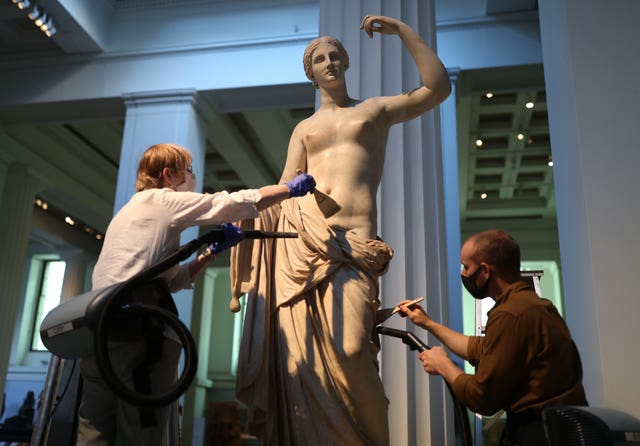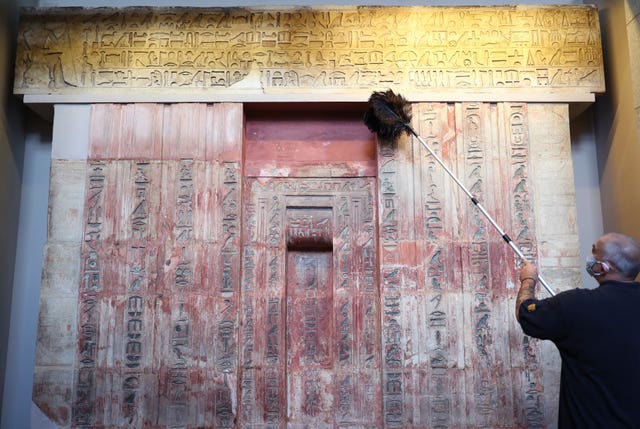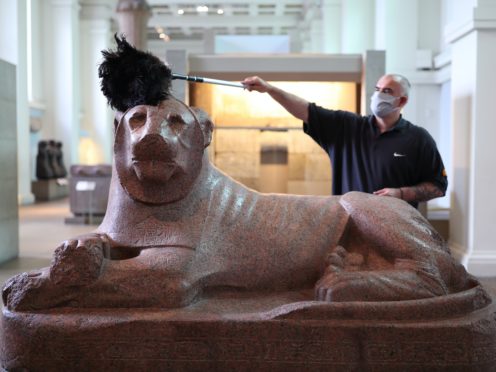Specialists are working on the biggest single cleaning programme at the British Museum in decades after dust accumulated on artefacts during the lockdown.
Teams of experts have been cleaning the surfaces of the exhibits in order to prevent them from getting damaged by the particles.
More than 30 staff members have been working on dusting the museum’s collections for around three weeks.

The London venue, which has been shut to visitors because of the coronavirus pandemic, is set to reopen on August 27.
Ladders and a cherry-picker have to be used to clean some of the larger objects, including a totem pole.
Fabiana Portoni, the museum’s preventive conservator and dust expert, said that the accumulation of dust particles on the museum’s ancient artefacts can cause long-term damage.

The major sources of dust in the museum include visitors, who can bring in dust from hair fibres or their clothes, and nearby traffic pollution, she said.
Ms Portoni told the PA news agency: “During lockdown, all of these sources were reduced however there was still dust present around the museum.”
The shortage of people flowing through the galleries and disrupting the air meant dust accumulated in more unusual places where it wouldn’t normally be expected to be found, she added.

Only limited cleaning took place while the museum was closed, Ms Portoni said.
Physical dusting and chemicals are used to clean objects, she added, but great care has to be taken as removing the dust can also damage an object’s surface.
Ms Portoni said the museum’s closure provided a fantastic opportunity to do a deep clean.

“A lot of these objects, to be able to clean them, they require ladders and different equipment and we have to do it before opening or after opening, so the timing is a little bit reduced,” she said.
“But now, because we are closed, we can spend hours cleaning and there’s no rush, so it is a good opportunity for that.”
The London venue will have been shut for 163 days by the time it welcomes back visitors, which is the longest peacetime closure in its 261-year history.

Visits to the museum will need to be pre-booked and a one-way route will be installed around some of its galleries.
Tickets for the day the museum welcomes back visitors have already sold out.
Galleries featuring objects from ancient Egypt, Greece, Rome, Assyria, Africa, Mexico and North America will reopen before more displays go on show later in September.
Other museums and galleries including the Natural History Museum, the Victoria & Albert Museum, The National Gallery and Tate venues in Liverpool, London and St Ives have all already reopened.
